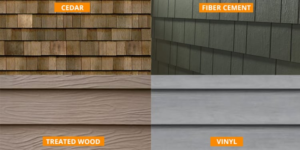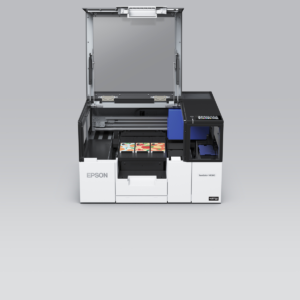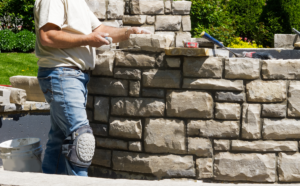With their intricate design, heavy weight and delicate components, pianos are a challenge to move. Hiring specialty movers is the best way to ensure your piano makes it safely from one location to another without damage.
Professional piano movers are worth the investment, from their expertise and specialized equipment to their insurance coverage and careful planning. Contact Denver Piano Movers now!

While some musicians may consider a DIY move to save money, enlisting friends and family for a moving day can create new risks and stress for everyone involved. Even the most trusted and loyal friends can find it difficult to maneuver a large, heavy instrument through a tight staircase without risking damage or injury. Professional piano movers have the experience and equipment to safely transport your instrument, while taking the necessary precautions to protect your home from harm.
The specialized moving equipment needed to transport a piano includes dolly systems with customized ramps, padded blankets, and heavy-duty straps. Additionally, professional piano movers have vehicles equipped with lift gates that allow them to carefully and securely load instruments into their trucks for safe travel. This equipment significantly reduces the effort and risk of damaging your piano during transit.
A quality piano moving company will have years of experience relocating all types and sizes of upright and grand pianos. A reputable business will also have references and testimonials from satisfied customers. These references will provide first-hand insights into the moving company’s reliability, professionalism, and efficiency.
Piano movers should also offer transparent quotes and real-time tracking, as well as responsive customer service throughout the process. They should be available to answer your questions, and their pricing will factor in the style of piano, weight, and distance of the move.
It’s important to communicate the specifics of your piano’s make and model, as well as its current condition to the movers. An accurate description helps them predict the challenges they will face during the move and plan accordingly. Additionally, it’s helpful to understand how a company handles damage claims, especially if the instrument has sentimental or financial value.
If possible, book a professional piano mover well in advance. This will help ensure that the company is available during your desired moving date and will have adequate crew and truck availability. However, if you must schedule a move at the last minute, look for a piano moving company that offers emergency services for an additional fee. Be sure to clearly communicate your piano’s details and any special instructions to the movers on moving day, as well as the schedule, addresses, and other key information.
Equipment
Pianos are a large and cumbersome object that require specialized knowledge to safely move. They are also expensive and can hold sentimental value, making them a high-risk item for damage during transport. Piano movers are trained in using specific equipment that is crucial to protecting your piano during the moving process.
One of the most important tools for any piano mover is a locking belt. This heavy duty strap has a wide width and can be used to secure the piano to the dolly or to other moving equipment, such as a truck ramp. It also has a ratchet on one end that can be used to tighten the belt, keeping the piano securely in place during transit.
Piano movers also use various padding and cushioning materials to protect the instrument during transport. These are placed on the sides of the piano to reduce movement and absorb shocks throughout the journey. They are also used on the surface of the piano, protecting it from scratches and other damage.
Professional piano movers also use heavy-duty dollies to make transporting the piano easier and safer. The dolly can be used to roll the piano over stairs or ledges. It also has a ramp that can be rolled up to load the piano onto a truck. Truck dollies have a weight limit and must be properly fitted to the piano in order to work effectively.
While many people may be tempted to move their piano themselves, it is a dangerous and often impossible task without the proper equipment. Even a petite grand piano can weigh more than 500 pounds, and it is nearly impossible to maneuver such a massive piece through doors without the right equipment. A single mistake during a move could result in severe injury to the piano, the piano movers, or other unforeseen consequences. Taking the time to hire professional piano movers is a worthwhile investment that will help ensure a safe, damage-free relocation. Reputable movers should be willing to provide references or past clients that can vouch for their skills and professionalism.
Insurance
Professional piano movers have the experience and equipment required to safely transport your instrument to your new home or place of business. They know the best methods to handle your piano and can maneuver it through difficult areas, such as flights of stairs. Additionally, they understand the importance of protecting the delicate and sensitive components of your piano from damage during transportation. This is why they carry liability insurance in case of an accident during the move.
Because pianos are so large and bulky, they’re prone to being damaged by improper handling. This can include scratches to the finish, dents to the interior, and even structural damage such as cracks or breaks to the frame. If these types of damage occur during the move, it can be very costly to repair or replace. Fortunately, most piano moving companies have liability insurance that covers the cost of repairing or replacing your instrument in the event of an accident during transit.
In addition to standard property and general liability insurance, many reputable piano movers have additional specialty policies that provide coverage for specific high-value items like pianos. These policy options often come with higher compensation rates than basic liability coverage and can help protect you from unexpected costs related to damage or loss during a relocation.
Before hiring a piano mover, ask them to provide you with proof of insurance. If they can’t, you should consider finding a different company. You should also make sure that the piano movers you hire have a current Workman’s Compensation Insurance clearance certificate (formerly known as Workers’ Comp). This is important because it ensures that if one of their employees is injured during the move, you’ll be covered.
There are also specialized third-party insurance providers who offer coverage specifically for high-value items like pianos. These policies often provide real-time tracking and other features that can add value to the coverage. Additionally, they can provide customized policy solutions to fit the unique needs of each customer and their high-value items. When you’re looking for piano move insurance, be sure to understand the terms and conditions of each policy before choosing which one to purchase.
Long-Distance and International Moves
Piano movers often have experience with extra-large or fragile items that require special handling. This is especially important when moving long distances or internationally, where schedules must be coordinated with additional parties like a shipline or airline. They also know how to navigate customs and other regulatory processes that may impact the shipment. They also provide comprehensive services like storage and piano tuning after the move.
A professional piano mover will be able to provide you with a transparent estimate that includes all costs and fees. This will help you budget your move, and avoid surprise add-ons later on. They will be able to assess the size and weight of your piano, as well as the layout of your home, to determine what equipment is needed. They will use padded blankets and dollies to prevent damage to the instrument, and ensure that your floors and walls are protected during transportation.
They will disassemble the piano if necessary to fit it through doorways or staircases, and will wrap each part in protective padding. They will then transport the piano on a truck with built-in climate control, ensuring that your precious instrument is protected from bumps and temperature changes during the journey. Upon arrival at the new destination, they will unload and reassemble the piano. They will then either store it in a climate-controlled facility, or tune the instrument as required.
Trying to transport an upright or grand piano in NYC on your own can be exhausting and dangerous. Unless you have specialized training and equipment, it is best to leave this task to professionals. They will be able to handle the complexities of an NYC move, from the congestion and traffic to the narrow staircases and tight doorways.
Piano movers will assess the condition of your piano, and if any parts are damaged, they will repair or replace them before preparing it for transportation. They will carefully inspect your home for potential challenges, and will note any stairways or other obstacles that may pose a problem. They will then use specialized tools and equipment to lift and transport your piano, safely and securely.








